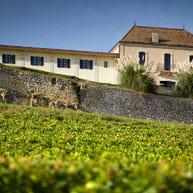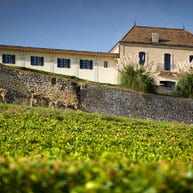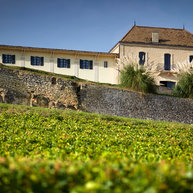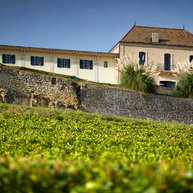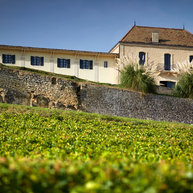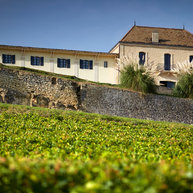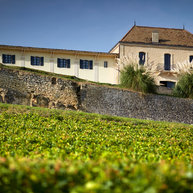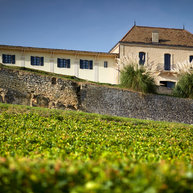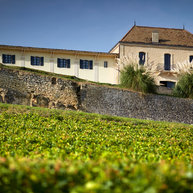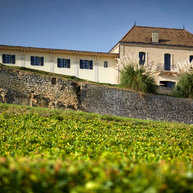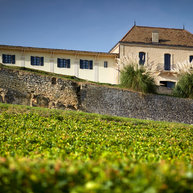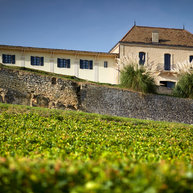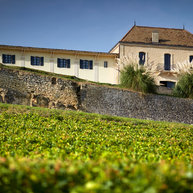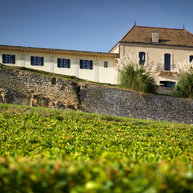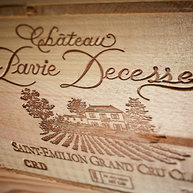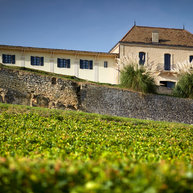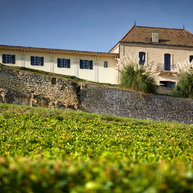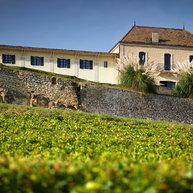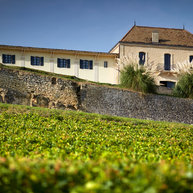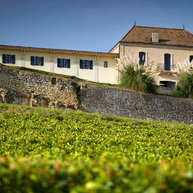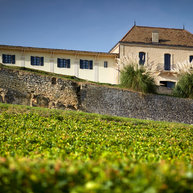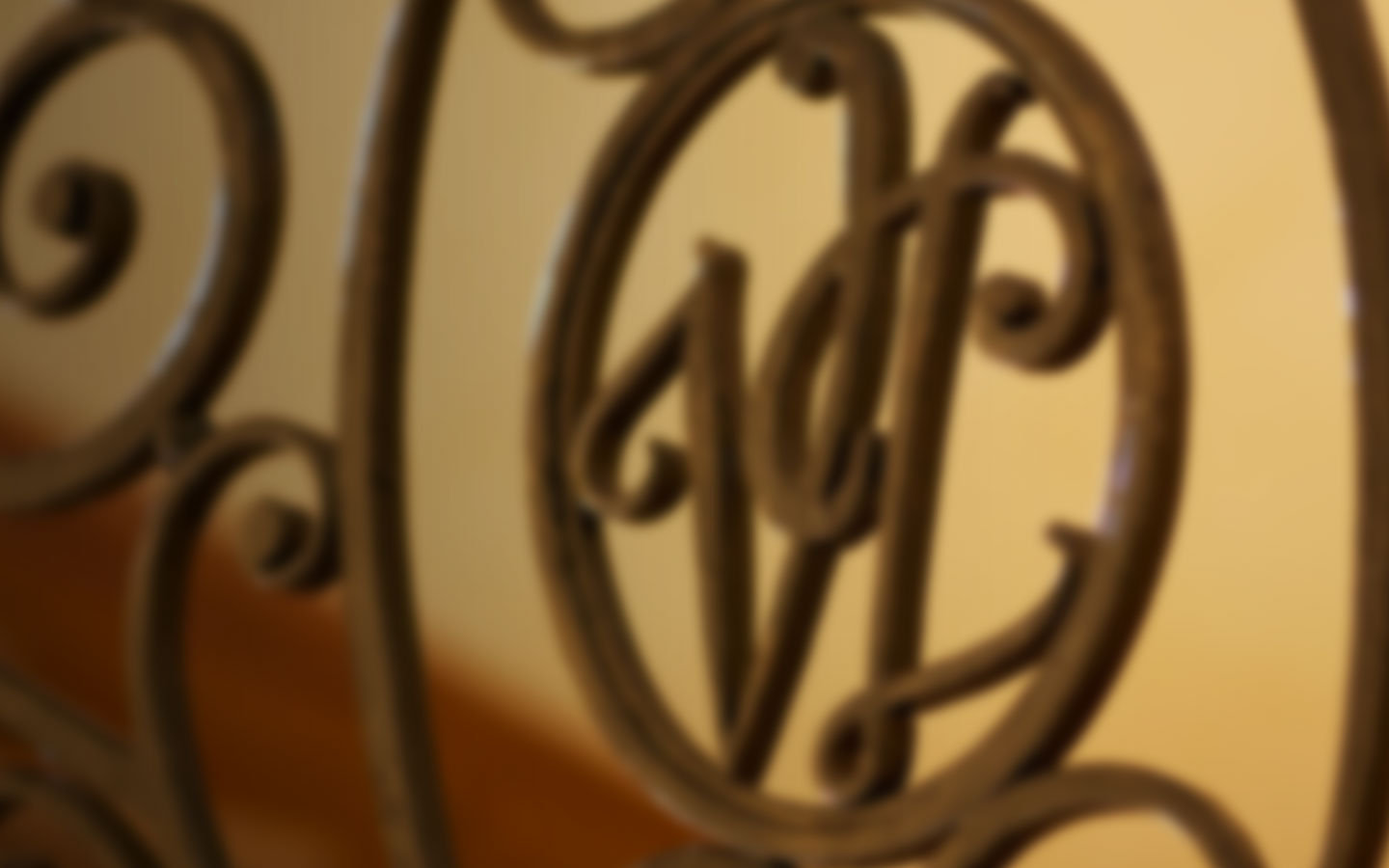- 2018
- 2017
- 2016
- 2015
- 2014
- 2013
- 2012
- 2011
- 2010
- 2009
- 2008
- 2007
- 2006
- 2005
- 2004
- 2003
- 2002
- 2001
- 2000
- 1999
- 1998
- 1997
- 2018
- 2017
- 2016
- 2015
- 2014
- 2013
- 2012
- 2011
- 2010
- 2009
- 2008
- 2007
- 2006
- 2005
- 2004
- 2003
- 2002
- 2001
- 2000
- 1999
- 1998
- 1997
-
David Biraud
Meilleur ouvrier de France 2004
Meilleur sommelier de France 2002This is a wine in its first youth, lively and complex, flavorful and forward at every stage of tasting. Its deep violet shows a good extraction of color from the grapes. The wine is aromatically exuberant and powerful, with notes of black fruit liqueur and black fruit jelly; it's complex and elaborate, combining a notably fine-quality oak toast with the fruit's ripeness.
The first impression in the mouth is clean and straightforward, evolving to focus on the wine's concentration, density and the supple tannins that are ripe and expressive on the mid-palate. The finish brings added depth with a vibrantly long intensity that is flavorful and complex, giving expression to the wine's exceptional terroir. Marrying elegance and power, this micro-parcel of vines shows itself ever better with each vintage. Never disappointing, with proven potential, the wine calls for much patience, but as the saying goes, a great wine is always great, whether in its first youth or later maturity. A favorite.
-
David Biraud
Meilleur ouvrier de France 2004
Meilleur sommelier de France 2002From a hidden corner of the Pavie hillside's limestone plateau comes this 2017 Pavie Decesse, which offers a beautifully deep, concentrated purple color. The aromatic palette is powerful and creamy: jammy notes of crushed black currants are underscored by floral elements, with elder and oak richness. This vintage defined by finesse is less generous than 2016 and distinguished by its lively freshness.
In the mouth the wine remains firm and well-defined, with tannins that are still tight but well-incorporated to produce a powerful structure. The finish is a bit gripping, a sign of the wine's youth.
The length is explosive, flavorful and aromatic, showing richness and a sharpness which contributes an attractive freshness. A fine wine from a vintage defined by its overall firm character, it needs aeration to soften the tannins. True to its style, this is a wine for aging.
-
David Biraud
Meilleur ouvrier de France 2004
Meilleur sommelier de France 2002This small-production wine comes from around 2 hectares of vines ideally-situated on limestone heights that are mostly planted with Merlot and a touch of Cabernet Franc.The wine has a deep violet color, and clean aromas, defined by the purity of its juicy black fruit evoking jam and black fruit liqueurs—an aromatic palette that is expressive and open.
The oak—smoky, noble and choice—makes itself felt by supporting the wine without dominating it; the intrinsic character of this growth is well-understood by the team at Pavie Decesse, who carefully manage the winemaking to fully reveal the vineyard's character.
The first impressions are defined by an exuberance produced by a well-established freshness and superb levels of essential acidity for this dense, rich wine.The middle palate is manifestly generous, with well-placed tannins imparting good structure which give the wine its ability to age well. The tannins are fine and beginning to smooth out with age, contributing to Pavie Decesse's perfect fundamental balance. The wine is beginning to open up and come together. Still, a little patience is called for: another 2 to 4 years in bottle will produce a more open aromatic profile.
-
-
-
-
David Biraud
Meilleur ouvrier de France 2004
Meilleur sommelier de France 2002The violet-purple color displays such wonderful concentration! Intense aromas of ripe black fruit (crushed black currants) display very fine definition and the accessible lightness of cool vintages.
In the mouth the wine is ample and tight, with still-young tannins that are very pleasant and massively structured. A beautiful finish shows toasty notes and flavors of black cherry jelly with great length. This is a work in progress requiring further aging to soften its tannins.
-
David Biraud
Meilleur ouvrier de France 2004
Meilleur sommelier de France 2002This Pavie Decesse, still in barrel, shows great concentration in the eye and on the nose. Intense, fresh expressions of black currant develop into a firm and ample mid-palate of fine, tight texture and great volume. The structure is still powerful with substantial personality. This wine attests to a harvest of extreme maturity and a vinification which pushed the limits to produce great aging potential. As is often the case with Pavie Decesse and its well-exposed terroir on the beautiful Saint-Emilion plateau, patience is called for because this is a very attractive wine in the making.
-
David Biraud
Meilleur ouvrier de France 2004
Meilleur sommelier de France 2002This inviting young wine has a very attractive blood-red color with violet highlights. The nose is dominated by fruit aromas, with intense ripe notes of juicy, sweet black berries. This is a vigorous wine still showing the influence of its barrel aging, with smoky and fresh wood touches imparting great distinction. A generous and deep impression on the palate is founded on young, firm tannins whose texture defines the wine's structure. A young wine with a future, possessing an ever-present class whose fine-grained tannins will further improve with time. Long, flavorful and multi-layered on the finish, this is a great wine which will stand out in the years to come.
-
David Biraud
Meilleur ouvrier de France 2004
Meilleur sommelier de France 2002Pavie Decesse's terroir truly shines in this type of vintage. The color is a very dense, inky black. Jammy dark fruit, like black currant jelly, foreshadows the wine's concentration and the harvest's maturity; a smoky note indicating careful barrel aging completes the aromatic palette. A smooth initial impression in the mouth is followed by the development of the structure's full depth. The mid-palate is tight, with evident, well-incorporated tannins. The rather firm finish with still-young tannins is typical for a wine of great concentration which needs time. This is a very powerful Pavie Decesse from a very mature harvest, with all the signs of a great vintage. It's still developing, but in five years it will reveal a unmatched level of class.
-
David Biraud
Meilleur ouvrier de France 2004
Meilleur sommelier de France 2002The wine's color is deep violet with purple highlights showing great concentration. Very open, expressive aromas of juicy, sweet black currant berries, jammy blackberries, spices and licorice; an intensely diverse range. Great scope and tight structure on the palate with everything in place: fine and powerful tannins and a rather firm mid-palate. The tannins require more time, but there is a satisfying acid balance and a slightly dry finish with good aromatic length. A bit of extraction and a somewhat unyielding quality accentuate this harvest's mature fruit. Age another three to five years, or let the wine breathe to fully appreciate it with simmered dishes and hearty recipes that will round off its tannic structure.
-
David Biraud
Meilleur ouvrier de France 2004
Meilleur sommelier de France 2002This Pavie Decesse's color is still deep purple, signifying a mature harvest and rich extraction. It's relatively discreet on the nose with a rather reserved aromatic range, but aeration develops concentrated notes of small black berries, brandied fruit and spices. In the mouth this wine is forthright, with tight and somewhat austere tannins becoming elegant on the mid-palate. The body is fairly light in structure, producing a pleasing finish. This rather severe vintage benefits from letting the wine breathe. Serve with preserved foods like smoked duck breast confit or aged poultry that has been stuffed and roasted. This wine has begun drinking well, and has a potential of five to eight years more.
-
David Biraud
Meilleur ouvrier de France 2004
Meilleur sommelier de France 2002This wine has a very young, purple color with violet highlights. The aromas are clean, with very good intensity. Fresh notes of blackberries and black currants dominate an aromatic profile of great character and complexity. On the palate the wine is powerful, with pronounced tannins forming the foundation of a still-young structure that is massive and balanced. The wine's freshness will be long-lasting, as has been seen in older vintages of Pavie Decesse. The finish is long and generous, displaying the mature character typical of wines that age gracefully; with sufficient time to breathe, its full dimension becomes evident.
-
-
David Biraud
Meilleur ouvrier de France 2004
Meilleur sommelier de France 2002A still-youthful color despite the wine's age, with beautifully intense ruby and light-brown highlights. The nose is very open, uniting aromas of exotic wood, cedar and forest floor with a touch of fruit liqueur as it evolves. The wine has great range, with a tight texture and elegant tannins which are still expressive. The mid-palate is fine and light in structure; not overly dense. The finish is spicy and generously long, with a focus on blonde tobacco aromas. Feathered game would make a fine accompaniment, or simmered dishes with a rich, smooth sauce.
-
David Biraud
Meilleur ouvrier de France 2004
Meilleur sommelier de France 2002This wine has an intense garnet-red colour and a powerful nose reminiscent of vins doux naturels (Banyuls, Maury, Rivesaltes) from the south of France, with a delightful blend of cherry jelly, candied morello cherry, and a hint of chocolate reflecting the extremely hot weather that year. 2003 Pavie Decesse starts off powerful and straightforward on the palate, going on to reveal plenty of soft tannin and an opulent, sensual texture. There is even the impression of something sweet on the middle palate. The rich aftertaste has a firm, well-structured tannic finish that bodes well for ageing. The extra-long finish (lasting several minutes) confirms the outstanding nature of the estate's terroir. This wine tastes good now, but it is still too young. It is best to wait 3-4 years, and its full ageing potential is more like 10-15 years.
-
David Biraud
Meilleur ouvrier de France 2004
Meilleur sommelier de France 2002The is the sort of vintage in which Pavie Decesse can be enjoyed earlier than usual. The colour is still dark and tending towards purple. The nose is full of character with a range of toasty, roasted aromas that are typical of this vintage at present. These aromatics carry over to the taste profile, which has considerable volume and substance, especially on the middle palate. The tannin is of very high quality and closely knit, simply needing time to show its true mettle. The aftertaste features an attractive spiciness, and the fruit that seemed to be missing at first comes out after a few minutes' aeration. This it is why it essential to decant the wine beforehand, a procedure that also tends to make the tannins smoother. The aftertaste is long and spicy. It makes a great match for red meats, woodpigeon stew, Bordeaux-style lamprey and, in general, dishes with a rich, brown sauce to offset the tannin.
-
David Biraud
Meilleur ouvrier de France 2004
Meilleur sommelier de France 2002It is always a pleasure to enjoy this vintage often overshadowed because it came just after 2000 - although it is not very far behind in quality. The colour is still young, a ravishingly beautiful Burlat cherry hue. The nose is very fruity with well-integrated oak. Aeration brings out the complex, attractive bouquet of black fruit, blackcurrant, and blueberry. 2001 Pavie-Decesse is quite powerful, with tannin of great character even if slightly ungainly and astringent at this early stage. The structure is such that this wines needs considerable ageing. The taste reflects very ripe fruit and has plenty of substance. 2001 Pavie-Decesse definitely has attitude. It is perhaps too young to enjoy with a meal, needing 3-5 years to hit its stride, and at least 10-15 years to reach its peak. This rich, delicious wine has many, many things to say to us.
-
David Biraud
Meilleur ouvrier de France 2004
Meilleur sommelier de France 2002This vintage is memorable not only because of the unusual nature of the date, but thanks to the tremendous quality of the wines. This 2000 is still a very dark, but brilliant ruby-red colour. The nose is open and attractive, but needs aeration to express itself, after which a very classy bouquet of prune, spice, cinnamon, toast, and blackcurrant macerated in alcohol comes to the fore. What an amazing range of aromas! The palate is even more seductive, with suave, round, elegant tannin underpinning rich blackberry fruit typical of a truly great vintage. 2000 Pavie-Decesse is very concentrated with a great deal of freshness and an extremely long aftertaste. By definition, great wines have a long finish, and this is very much the case here. However, it is strongly advised to serve this wine at the right temperature (16-18° C) to tone down the hot notes from a very ripe year. 2000 Pavie-Decesse goes down a treat with braised veal, rump steak, veal kidney with spices, and game.
-
David Biraud
Meilleur ouvrier de France 2004
Meilleur sommelier de France 2002Beautiful ruby-red colour just starting to show its age, with some purple highlights. Good fruit on the nose, but this is beginning to give way to more tertiary aromas such as spice and chocolate as well as subtle hints of oak. The bouquet is already complex and varied, affording a great deal of pleasure. 1999 Pavie-Decesse starts off straightforward, going on to reveal elegant, smooth tannin and a refined, round taste profile. The middle palate is very pleasant and the aftertaste quite fresh with mouthwatering, largely unaggressive tannin. A very drinkable wine that can be enjoyed as of now, but which will keep perfectly well for the next 4-6 years. You can enjoy this with panfried calf's liver and veal sweetbreads, grilled poultry and ceps, or cow's milk cheeses such Camembert, Brie, or Saint Nectaire.
-
David Biraud
Meilleur ouvrier de France 2004
Meilleur sommelier de France 2002Very beautiful dark, yet brilliant ruby-red colour that is a pleasure to behold. The nose is still rather closed-in, but the wine is much more expressive after aeration. The bouquet is understated, but beautifully concentrated and elegant with fruity (blackcurrant, cherry, and juicy fresh blackberry) aromas and a hint of roast coffee. 1998 Pavie Decesse is straightforward on the palate with an impressive structure and a very attractive mouth feel. The middle palate is velvety and delicious. The aftertaste is rich, mouthwatering and very long. This wine is the perfect illustration of what a great terroir can produce. It is wonderful to drink now, but please do not hesitate to let it breathe a while so it can show itself to its best advantage, at which point it makes a fine accompaniment to panfried duck with black olives, fillet of roast lamb with rosemary, or a rare beef served with morel mushrooms.
-
David Biraud
Meilleur ouvrier de France 2004
Meilleur sommelier de France 2002The colour of this wine is certainly the most evolved of all the vintages of Pavie Decesse since it has belonged to Vignobles Perse. It has an intense ruby-red colour with brown highlights. The nose is quite open, with aromas of stewed fruit, blackcurrant liqueur, and cedar as well as refined toasty, cocoa aromas due to barrel ageing. 1997 Pavie Decesse is soft, with delicate, elegant tannin. There is nothing harsh or dry on the middle palate. Altogether upfront and smooth, this wine is very nice to drink now, and the vintage is by no means as uninteresting as many people think. There are flavours of cherry brandy, forest floor, and spice on the palate. A surprising wine since it is perfect to serve at the present time, especially with roast rib of veal, skirt steak with pepper, quail stuffed with grapes, and cheeses (especially cow's milk cheeses).
